Heart-warming? More like heart-harming. Here are 5 cardiac parasites ... for Valentine's Day
Parasites are linked to diseases that can harm hearts and disrupt normal cardiac function.
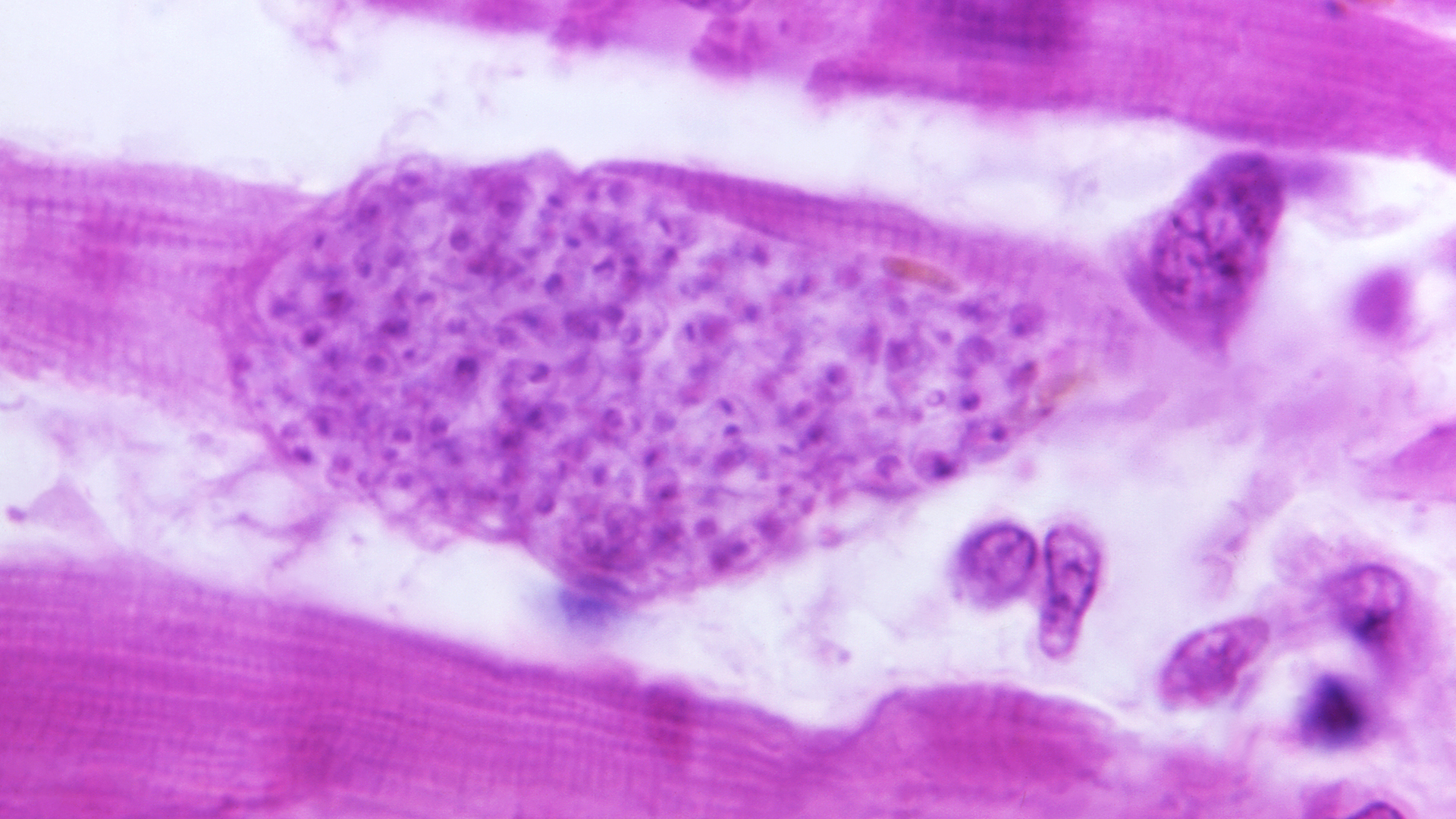
The award-winning movie "Parasite" recently won audiences' hearts around the world. While that interaction was benign (for most), encounters with real-world parasites are linked to heart disease, and some can seriously disrupt normal cardiac function.
Parasitic infections in humans can lead to myocarditis, a disease that causes heart tissue inflammation. Parasites can also cause pericarditis, an inflammation of the membrane around the heart; and cardiomyopathy, a disorder that impedes pumping and can lead to heart failure, researchers reported in a study published in the journal Clinical Microbiology Reviews.
For Valentine's Day, here are a few of the parasites that can impact heart health.
You're welcome.
Related: The 10 most diabolical and disgusting parasites
Toxoplasma gondii
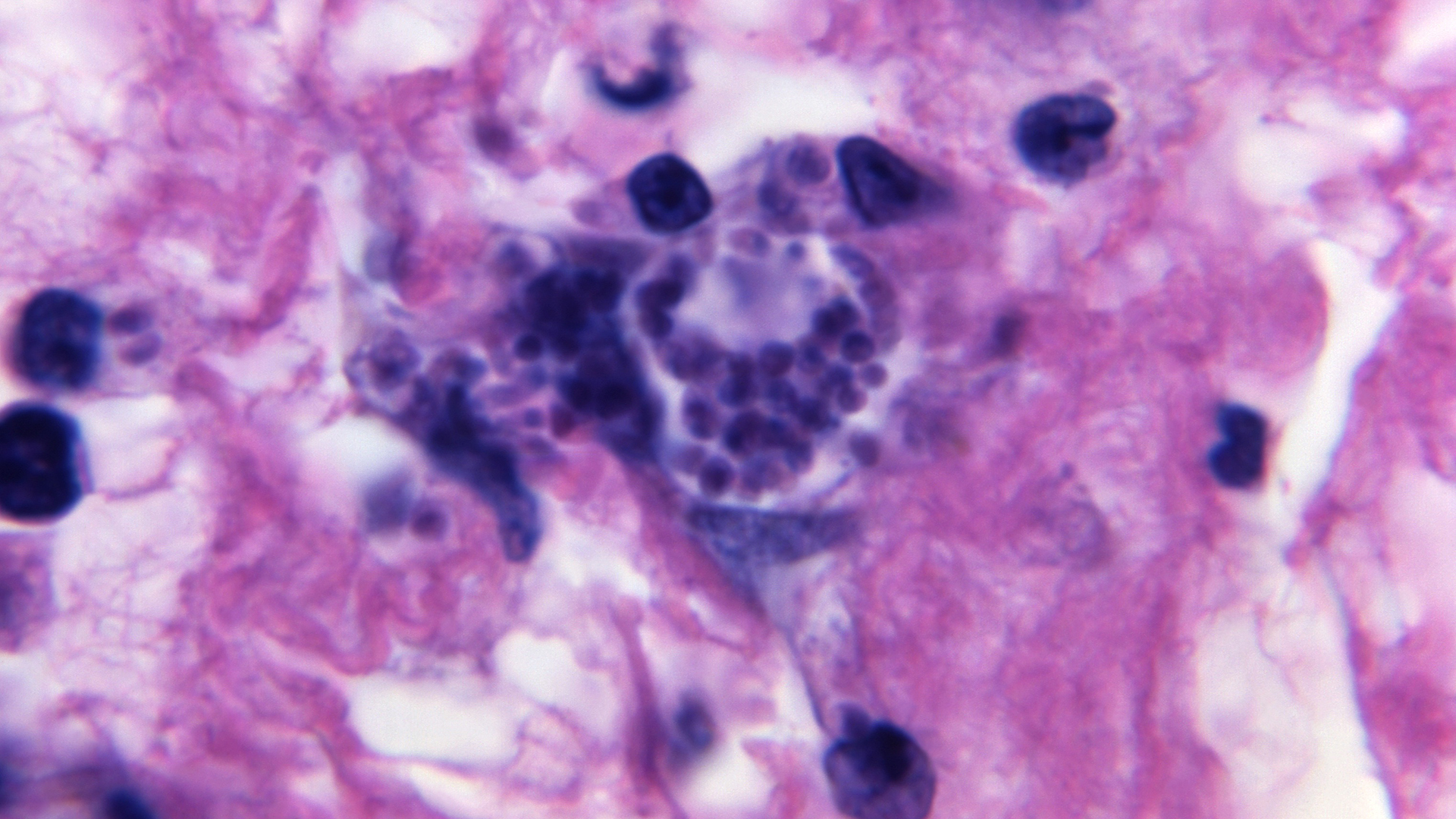
A microscopic organism called Toxoplasma gondii is responsible for the disease known as toxoplasmosis. It can be transmitted to humans through contact with cats, and may affect up to 2 billion people worldwide (though most develop no symptoms, according to the Centers for Disease Control and Prevention, or CDC).
T. gondii can persist in heart muscle, where it forms tissue cysts that can remain through the host's lifetime, and heart disease may be linked with chronic infection of T. gondii, researchers reported in the Journal of Clinical Medicine Research.
Sign up for the Live Science daily newsletter now
Get the world’s most fascinating discoveries delivered straight to your inbox.
Entamoeba histolytica
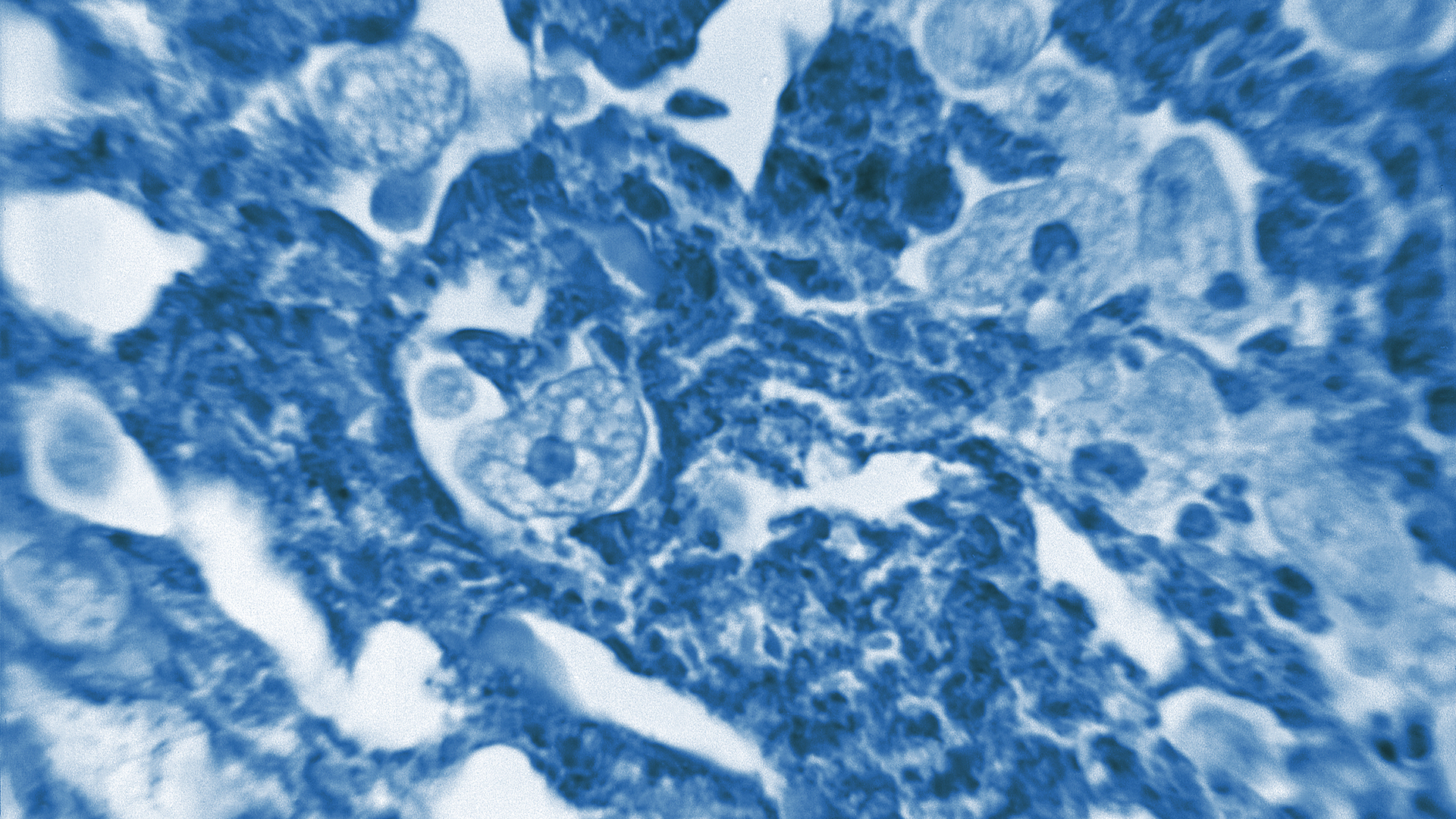
This parasite is the primary cause for amoebiasis, or amoebic dysentery, a colon infection marked by abdominal pain and diarrhea, according to the CDC. But in rare cases this parasitic infection can lead to a serious heart complication known as amebic pericarditis, in which it causes abscesses in the pericardium — the saclike membrane surrounding the heart, scientists wrote in the Journal of Clinical Medicine Research.
People with pericarditis often experience sharp, stabbing chest pain caused by the irritated pericardium walls rubbing against each other, the Mayo Clinic says.
Trichinella spiralis
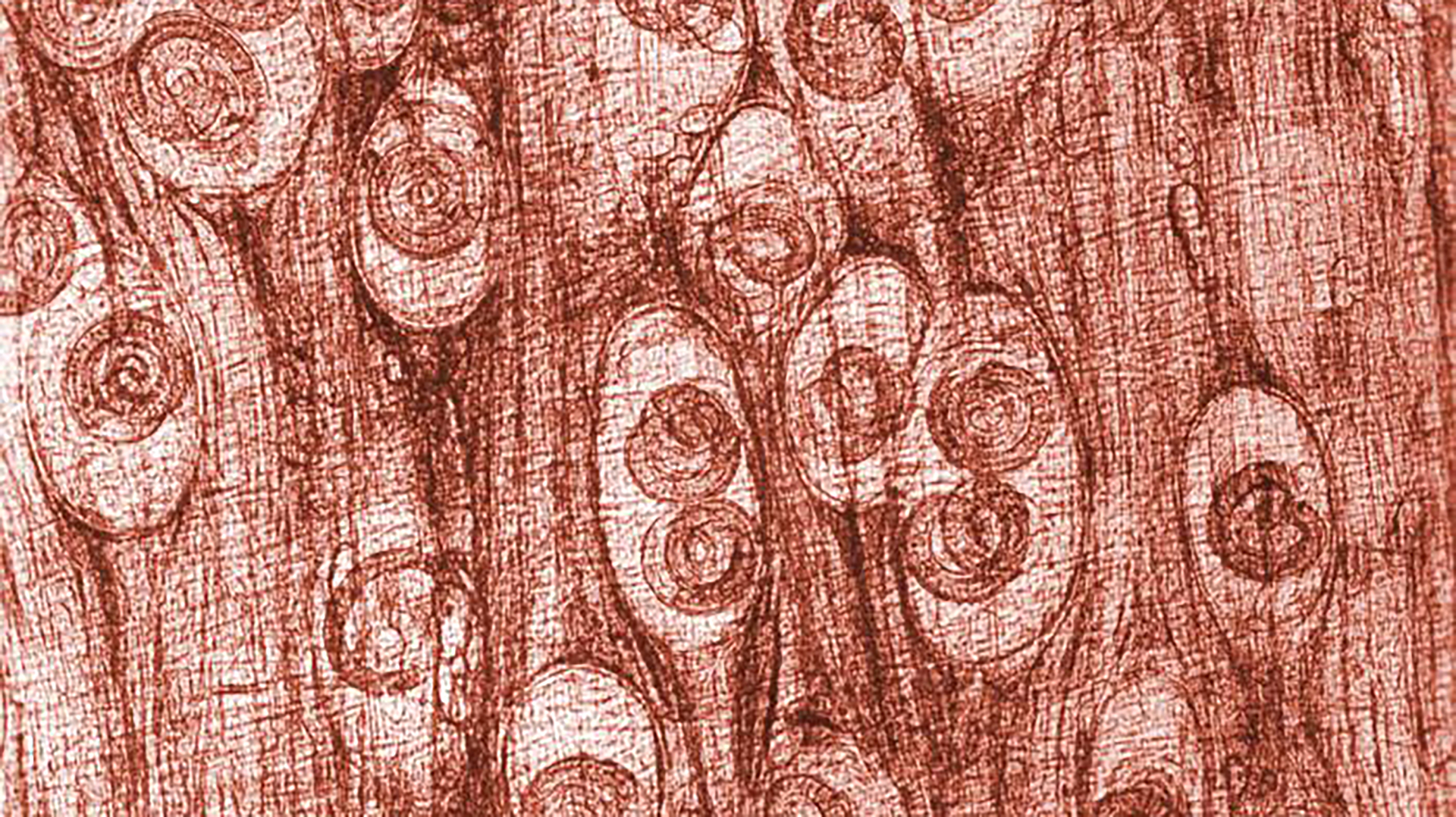
Trichinella spiralis is a parasitic roundworm that targets carnivorous and omnivorous mammals around the world. It infects people who eat the undercooked meat of infected animals, entering the human hosts as larvae-filled cysts and causing the disease trichinosis, according to the CDC.
After a host swallows the cysts, stomach acid dissolves the sac and releases the larvae into the body; eventually they circulate into the blood and burrow into muscles and brain tissue. Severe complications from the parasite can include heart tissue inflammation and life-threatening arrhythmia, or irregular heartbeat, researchers reported in the journal StatPearls.
Echinococcus granulosus
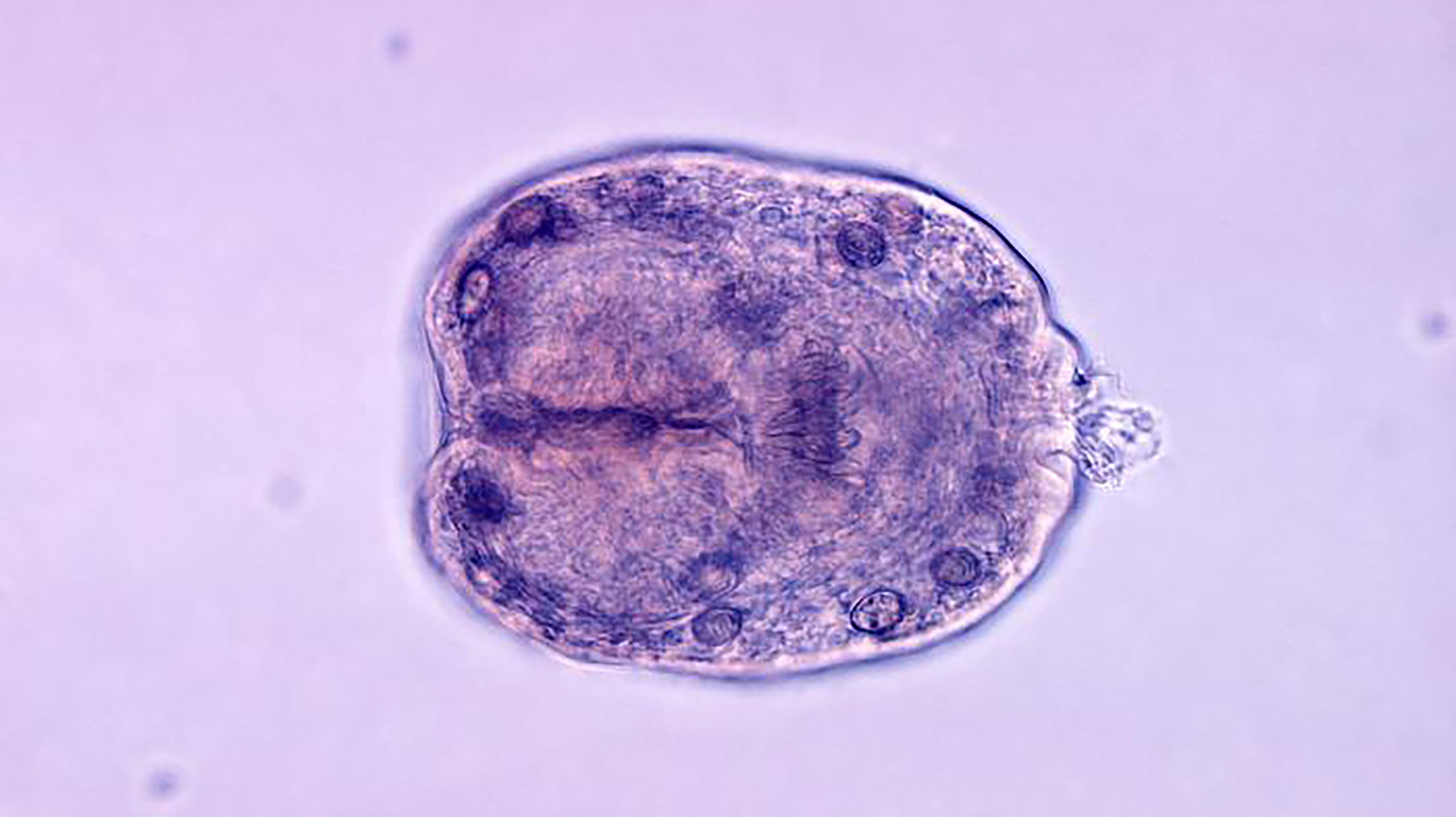
Tapeworms in the Echinococcus genus can infect people when their eggs are ingested after contact with feces from a dog or other canids, scientists reported in the journal Clinical Microbiology Reviews (CMR). The eggs hatch and the six-hooked embryos cross the intestinal wall and travel to organs to form cysts, the CDC says.
Cardiac cysts are rare, but can lead to irregular heartbeat; accumulation of fluid in the sac surrounding the heart; fainting due to high blood pressure; heart attacks and even sudden cardiac arrest, according to the CMR study.
Trypanosoma cruzi
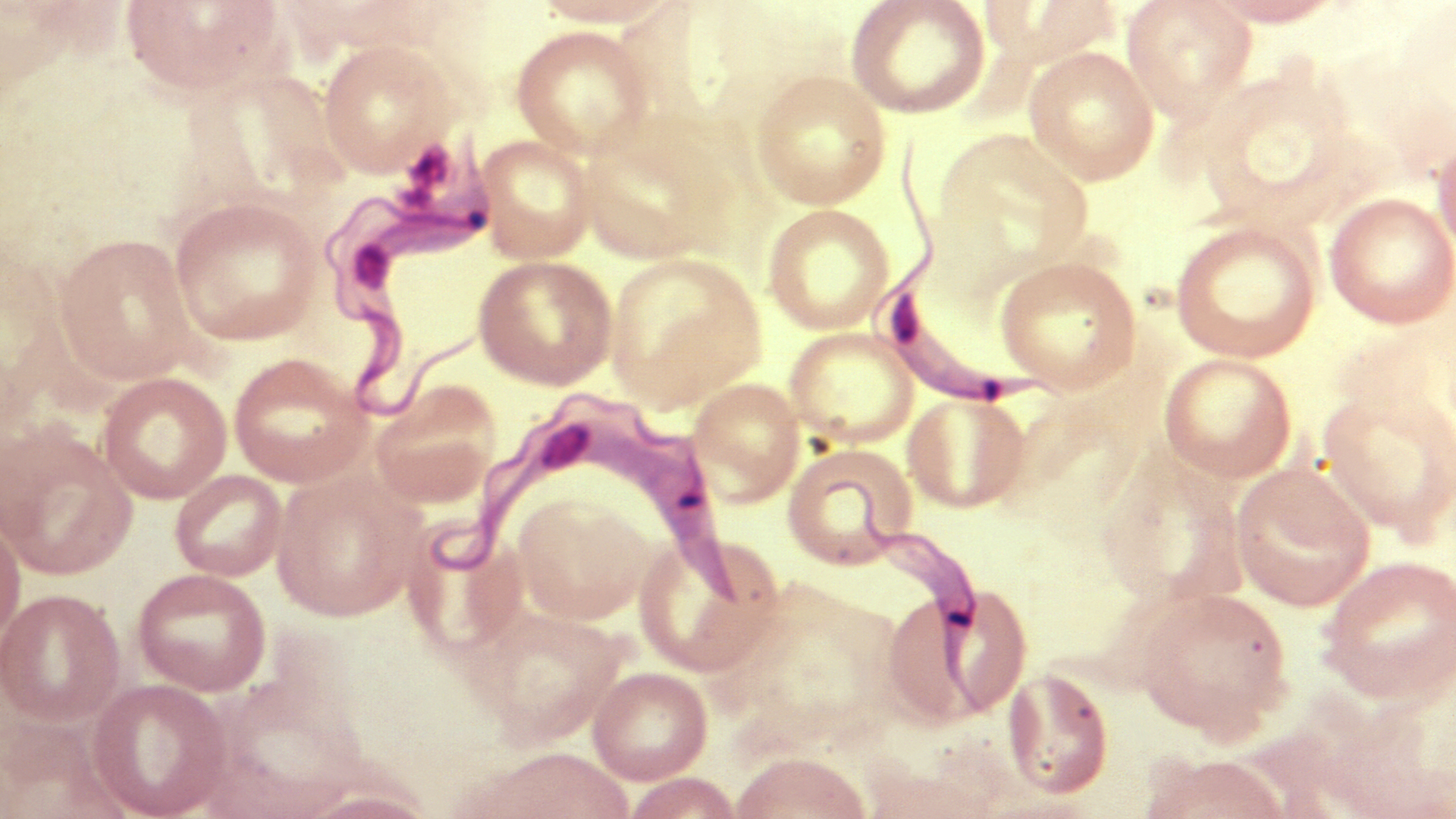
Trypanosomiasis, or Chagas disease, is caused by the parasite Trypanosoma cruzi, and is transmitted to people through bites from insect vectors, according to the CDC.
About 30% to 40% of people infected by T. cruzi develop heart complications associated with chronic Chagas disease, such as heart rhythm abnormalities, a dilated heart that doesn’t pump blood effectively, and congestive heart failure, the Mayo Clinic says.
In many cases, symptoms can appear 10 to 30 years after the victim was first infected, researchers wrote in the journal Clinical Microbiology Reviews.
- Top 10 amazing facts about your heart
- 7 strange facts about the 'mind-control' parasite Toxoplasma gondii
- 8 awful parasite infections that will make your skin crawl
Originally published on Live Science.


Mindy Weisberger is an editor at Scholastic and a former Live Science channel editor and senior writer. She has reported on general science, covering climate change, paleontology, biology and space. Mindy studied film at Columbia University; prior to Live Science she produced, wrote and directed media for the American Museum of Natural History in New York City. Her videos about dinosaurs, astrophysics, biodiversity and evolution appear in museums and science centers worldwide, earning awards such as the CINE Golden Eagle and the Communicator Award of Excellence. Her writing has also appeared in Scientific American, The Washington Post and How It Works Magazine. Her book "Rise of the Zombie Bugs: The Surprising Science of Parasitic Mind Control" will be published in spring 2025 by Johns Hopkins University Press.
Flu: Facts about seasonal influenza and bird flu
What is hantavirus? The rare but deadly respiratory illness spread by rodents









